|
 |
|
|
|
 |
|
 |
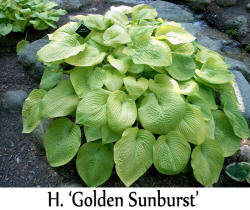 When
a part of a clump makes a permanent color change, it is called a
sport. However, it has been discovered over years of
observations in the garden that certain hostas experience
temporary, seasonal changes in their colors every year. In other
words, they emerge from the soil in the spring with a certain
color pattern and by fall, they have transformed into a slightly
different color. The degree and extent of the seasonal change is
often influenced by the weather during a particular summer. When
a part of a clump makes a permanent color change, it is called a
sport. However, it has been discovered over years of
observations in the garden that certain hostas experience
temporary, seasonal changes in their colors every year. In other
words, they emerge from the soil in the spring with a certain
color pattern and by fall, they have transformed into a slightly
different color. The degree and extent of the seasonal change is
often influenced by the weather during a particular summer.
Of course we
have already mentioned that blue-green hostas will often lose
the wax on the surface of their leaves allowing the green color
from below to show through. What we are talking about here is an
actual change in the pigment inside the leaf cells that cause a
change in color over the length of a single growing season.
|
Seasonal Color
Changes and Effects
|
|
Albescence -
Lutescence -
Viridescence - Blue to Green -
White Surfaces |
 |
|
|
1.
Albescence -
Alba is the
Latin term for white. So, what happens here is that plants start as
another color such as yellow or cream but turn lighter and whiter as
the season moves through the summer.
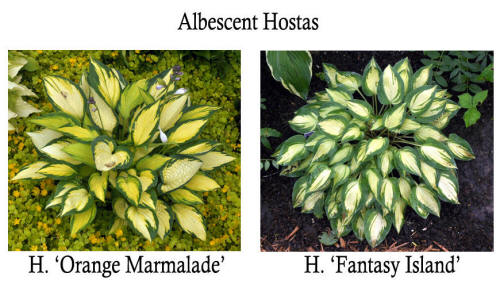

|
|
 |
2.
Lutescence - The term
lutea means yellow in Latin so this has to do with a change in
yellow hosta leaf tissue. In this case, the plants emerge as
greenish-yellow, pale yellow or yellow and, as the season
progresses, they become more of a golden-yellow color. In a few
cultivars, this actually results in an attractive fall golden hue.
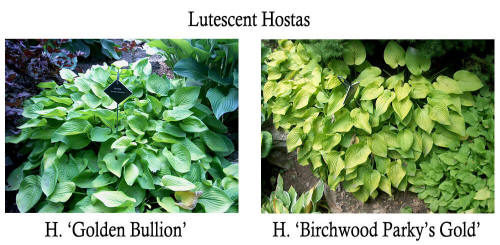

|
|
 |
3.
Viridescence - Latin for
green is viridis and this term relates to the change in the green
pigment of hostas. Generally, these plants emerge in the spring as
light green or medium green plants and turn to darker green by the
end of the summer months. Therefore, they generally are at their
peak color interest in the spring and early summer.
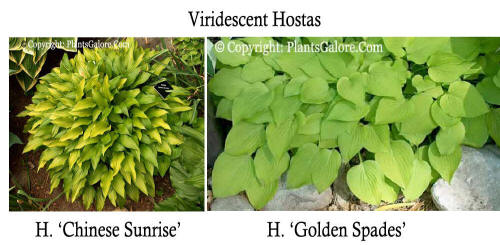

|
|
 |
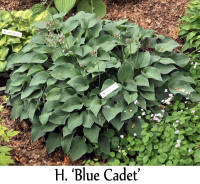 4.
Blue
to Green - The color blue on hosta leaves
is due to the presences of a waxy "bloom" that covers the
surface of a normally green leaf. This wax is at its
thickest and reflects blue light the best in the early
spring after the plants first emerge. The heat of the summer
and rain beating down on the leaf wears away the wax
revealing the green below. 4.
Blue
to Green - The color blue on hosta leaves
is due to the presences of a waxy "bloom" that covers the
surface of a normally green leaf. This wax is at its
thickest and reflects blue light the best in the early
spring after the plants first emerge. The heat of the summer
and rain beating down on the leaf wears away the wax
revealing the green below.
On many blue-green hostas, this color change will vary from year
to year, site to site and even leaf to leaf depending on the
intensity of the sunlight, heat, dry weather and other factors.
However, certain cultivars are noted for routinely changes
color, generally from blue-green to dark green, every season. We
have created the term "Bluescence" for such hostas and have
gathered a listing of cultivars noted for this feature.

|
|
 |
5.
White Surface Effects
-
A few hosta species such as
Hosta hypoleuca,
Hosta pycnophylla and
Hosta longipes 'Urajiro' are known for having white on
the underside of the leaves. This color is the result of a
covering of an opaque white powder that the plants produce.
|
|
|



